The Scottish Enlightenment and the connections between geology and the European Enlightenment: From the Past to the Present
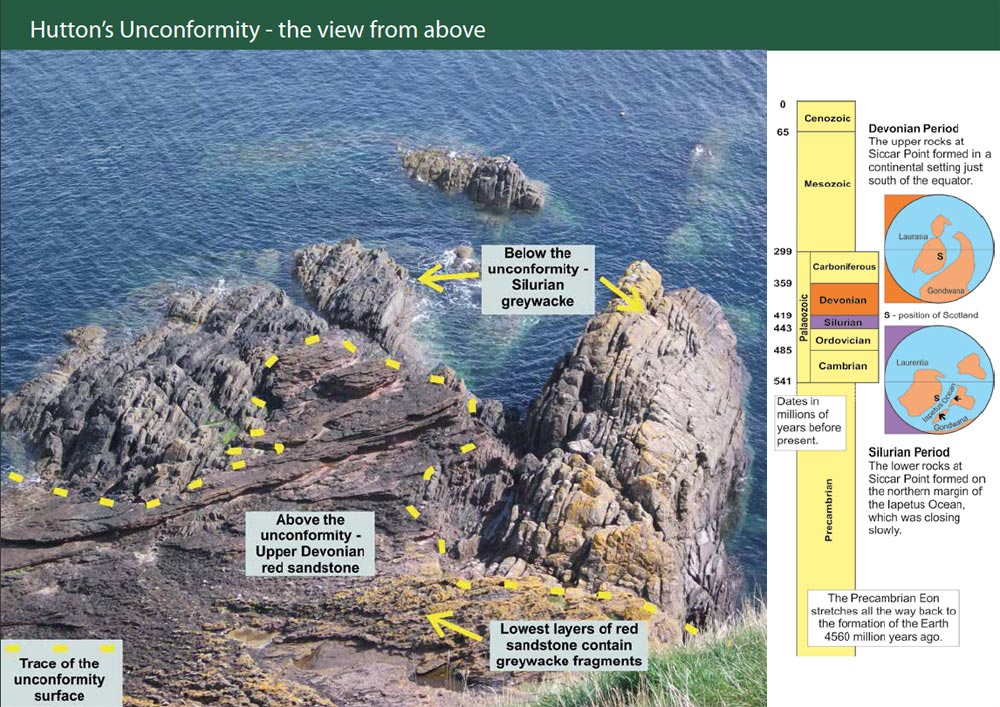
What inspired this blog?
The inspiration was based on a talk by Caroline Winterer, who is the William Robertson Coe Professor of History and American Studies. One of her specializations are the history of science and the history of our scientific understanding of the world.
She is also the author of five books, including most recently American Enlightenments: Pursuing Happiness in the Age of Reason (Yale, 2016). In it, she shows how early Americans grappled with the promises of the Enlightenment–how they used new questions about the plants, animals, rocks, politics, religions, and peoples of the New World to imagine a new relationship between the present and the past, and to spur far-flung conversations about a better future for all of humanity.
Caroline Winterer – William Robertson Coe Professor of History and American Studies
Art & Science of Deep Time: Conceiving the Inconceivable in the 19th Century | Caroline Winterer
The Art and Science of Deep Time: Conceiving the Inconceivable in the 19th Century
Politics and Science
The second source of inspiration was based on a 2017 conversation with Dr. Clive Roderick Sneddon, on why would I be interested in politics if I am studying a science such as geology. He asked what connections would exist between the two. Clive is a member of the Liberal Democrats (stood as a parliamentary candidate several times and was a Councillor in the 90s) and this conversation happened while we were delivering leaflets in Arbroath. The topic of the sandstone cliffs came up and I started talking about their geology. Clive was expecting me to study political science at university not geological science.
I realized that a lot of government decisions are not based on scientific understanding, and due to that government makes the wrong decisions than plays catch up when things go wrong. I think this happens as government has to be forced to have scientists in the room when decisions are made. Scientists are seen as a special class that should only be brought in when specific decisions happen about specific topics. And even so while science is expensive, good advice is cheap. [1]
This is an interesting blog about how science and politics interacts in the opinion of Dominic Cummings:
What is this about?
These series of blogs aim to discuss the connections between politics, geology and how human interaction is influenced by the geography and geology of the landscape. I aim to look at few episodes in human history which affected the history of geology as a science, and events, cultures in human history which came to be due to the influence of geology.
I aim to look at the reverse as well, where the geology and geography of the landscape influenced human history.
These blogs were born out of a 12 part PowerPoint presentation series and discussion with various politicians and geographers I had for the past 5 years.
The blog would take 14 parts with the extra research material as it turns out our knowledge of evolution might be effecting the ways our brains starting to evolve.
What are the key questions?
I aim to look at the machinations of geology and human history, I aim to look at the following questions, all derived from the topics of the Power Point: How did geology influence human history and how will it influence philosophical view of the world?
How was the Scottish Enlightenment fed by the theories of geology?
What roles does geology play in the population’s understanding of the world?
How does it influence the way people vote and see their own nation on the globe?
How do geologists advise African governments when it comes to droughts around Africa?
How do volcanoes effect aviation today and how did they affect the history of 19th century Europe?
How does the landscape of Eurasia influence the political instinct of countries? (Why is Germany different to Britain? Why do the British have an island mentality while the Germans have a continental one, such as some of the national songs: Rule Britannia! Britannia rule the waves, Britons never, never, never shall be slaves! versus Deutschland, Deutschland über alles, Über alles in der Welt!) [2] [3]
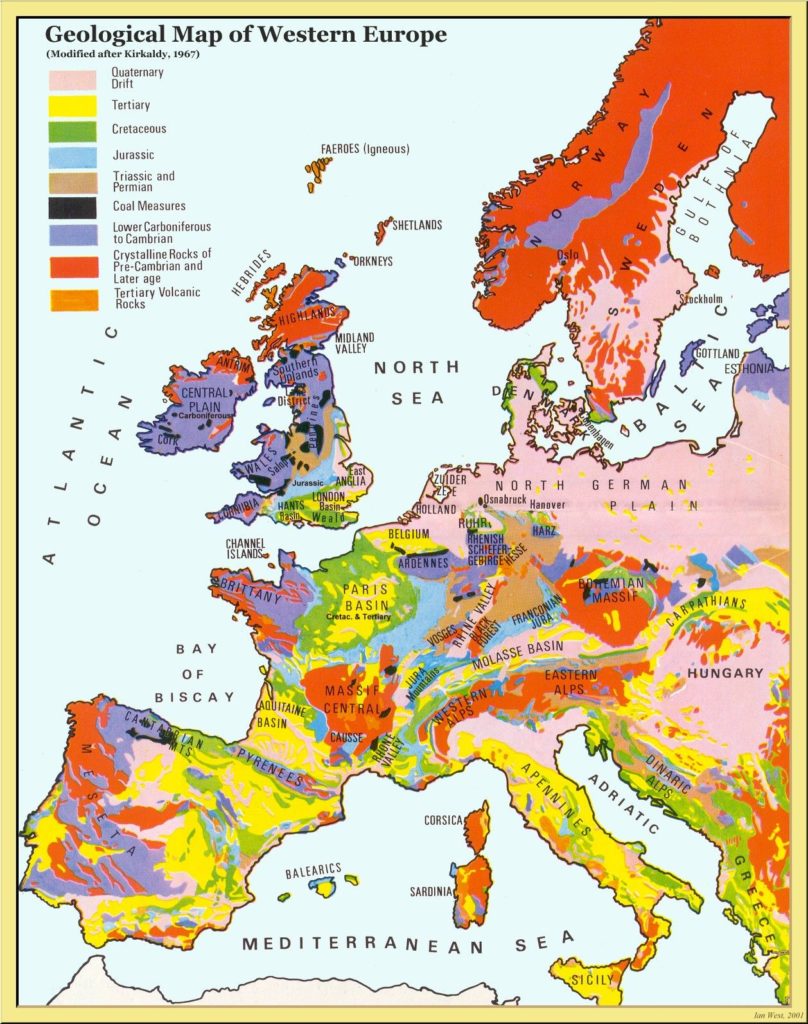
Geological map of Western Europe
Are the origins of European culture in the Mediterranean? How did the Mediterranean change in the past 50 million years and how did geology play a role in the emergence of ancient Greece and later Rome?
What impact does geology have on our modern world? How does mining and the BGS risk list affect international politics and how does that influence the local conflict between international companies and people living in the area?
What is the future of mining on the planet, will it be underwater ore deposits? How did underwater ore deposit mining start out from the Cold War and a CIA plot to steal a Russian submarine?
How does our need for fossil fuels to run our economies lead to political change? Does oil play a large role in British-US policy in the middle east? How do Google and Amazon work with Big Oil?
How did geology kick-start ancient civilizations in Europe and how did it enable the Roman Empire to grow? How did geology influence the Silk Road, how did it fuel trade between the Roman Empire and the Chinese Empire?
How does geological research like CCS effect the future of humans? (This section looks at fighting climate change, geothermal energy, CCS, nuclear storage in different geological mediums, coal mining in Germany and geological time on human perception of its place on the planet. All these topics contain political questions as well)
How does geology play into the UN’s Sustainable Development Goals Development plan?
How does climate change effects political philosophy and International Relations? Is the Anthropocene real, should we name a geological era after human impact on the surface of the planet?
Questions about the political discussions about climate change: How does one present climate change data to the public? How does a changing climate effect the relations of nation states? Is there a problem with a difference of perspectives between geologists, politicians and the general public? (The Nation State view of the world versus the Internationalist view of the world)
How does geology change the perspective of an individual person? How does geology affect our Political Discourse? Does understanding bits of the world, degrades the quality of ones understanding of the larger view of the world?
These are the questions that I attempt to answer and understand.
The 12 part PowerPoint goes through certain aspects of geology, politics and international history. It is based on my experience through the past 5 years at university, things I learnt in my geology courses and my readings in politics, history & international relations.
What is Geology?
I think the main question to ask first is: what is geology? But not to the geologist, as they have plenty of answers, but to the average person. What does geology mean for them? Are they even aware of geology? When they look out onto a landscape, do they see the geological aspect of the land or do they just see a regular old landscape?
I think the average person despite living geology as the landscape inhabited by them is fashioned by the forces of the planet, doesn’t see and understand geology. For them it is an obscure part of science often confused by genealogy. They know geologists as the rock people and maybe something about the oil, but otherwise the science tends to be obscure.
It should be really important to bring the wider ideas of geology to the public such as how the forces of the planet had a massive impact on human civilization today.
The way we observe the world
How people see the landscape made me ask a further question: is there a level of degrees at which people see the world, is there a set of layers in the way people observe the world? Do they see the world through a lens of ideology or through the subject they are interested in? I think there is a way to understand how people observe an object or an idea. This I laid out bellow:
How I think people observe systems in the world: Passive->Active->Interactive(External)->Interactive(Internal)->Constructive. It works the following way: Sees system->Understands system->Interacts with System but not crucial in running system->Interacts with system, takes part in the operations of the system, but has no decisions in how the system operates, cannot change system in response to conditional changes->Creates new system/reorganises system, changes key components without destroying system. Example in life: Person sees bus and bus stop->Person knows what the bus stop and bus are for (eg. transportation), but doesn’t use the bus service->Person takes bus to a destination, person uses the bus service-> Person is a bus driver or employee of the company, outside of management->Person designs the bus routes and decides where the bus stops are placed or person takes part in management of the company (eg. they decide that if a tree falls on the road, whether to divert the route and how, cancel the route or rely on existing routes and send people to different services. Most people only engage in observations till level 3 (Interactive(External)).
Passive->Active->Interactive(External)->Interactive(Internal)->Constructive. [This is my own idea from observing how different geoscientists interact with the landscape, how people interact with policy in government. For a Geoscientist maybe only the geology of the landscape is interesting while they will completely ignore the archaeological site in the area, or a politician might care about the implementation of new policing procedures without looking at how much would it cost.]
I think the same can be applied to how people see geological ideas and engage with geology.
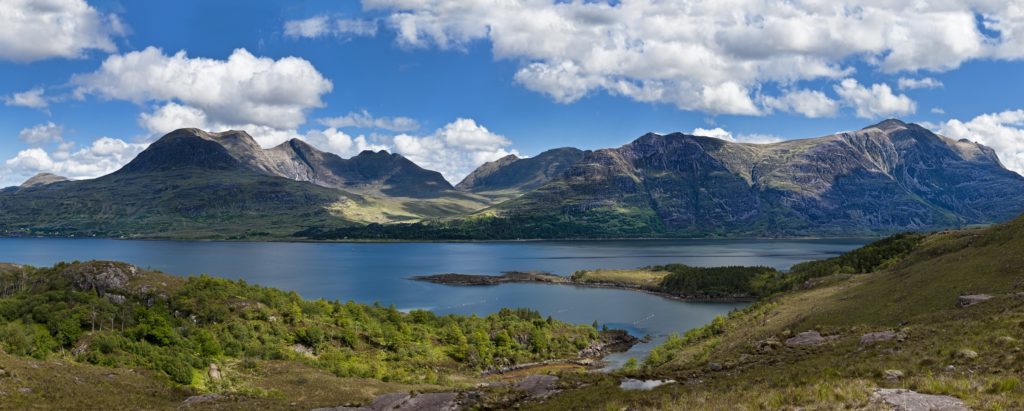
What do you see when ye look upon thee Highlands of Scotland? (The history of a people, the geology of the landscape, the vegetation which covers it, the atmosphere which blankets it?)
Why was I interested in the connections between geology and history?
I got possessed by the idea, how geology played a massive role in the history of science in the United Kingdom of Great Britain and Ireland. Our nation produced great people like James Hutton, Charles Darwin, Adam Sedgwick, Charles Lyell… The list is endless. They were the great builders of the modern science of geology as we know it. In turn the knowledge gathered by them influenced the wider world by for example giving inspiration to Charles Darwin and his theory of Natural Selection. I was especially interested in the rise of Hutton and his ideas demolishing old views of the Earth. James Hutton’s story is a long and an interesting one. [4] [5]
Britain produced an interesting science in the form of geology.
The main question, however is: Why? Why did James Hutton emerge out of 18th century Scotland? Why did 18th century Scotland emerge out of 18th century Scotland? Why did the UK lay the modern foundations for geology? Shouldn’t the scientific contribution to geology be more evenly distributed like it is today?
Why did James Hutton emerge in Scotland? There were people before him who talked about the age of the Earth and wrote about rocks, yet it was him who combined all the ideas together to form a coherent theory of the Earth.
I think his past thought process is important to understand.
Most people live in a world influenced by geology. The resources they use, the food they consume, the borders of the countries through which they travel are all influenced by geology (or geography as puppeteered by geology). It is a ghostly being which travels through the walls of civilization bobbing in and out. It sometimes appears in the circuitry of the cell phone, it sometimes appears as massive volcanic eruptions killing thousands of people. Geology means prosperity and death at the same time. It is important to understand the entire field. [6]
The Topics Explored in this series:
The Scottish Enlightenment
How a handful of thinkers changed how we see the world. It runs through the great figures of the Scottish Enlightenment and how 19th century geologists were influenced by it. It examines how scientists don’t just exist in a vacuum and like in the modern day, they always cooperated and exchanged ideas.
Geology and Us
How geology and the regular Joe interacts with each other. Here a few examples are looked at how geology is used to understand the planet and shape it to benefit human civilization. Three topics are looked at: Comparative performance of rural water supplies during drought – 2015–16 drought in Ethiopia; Supervolcanoes, L.I.P.s and the Year Without Summer; Volcanoes and their effect on aviation post 2010 eruptions of the Eyjafjallajökull volcano.
Political Natures, European Identity and Geology
How the geographical outlay influenced the movement of people on the Eurasian continent. The geographical location of Germany, France, Russia and Britain are compared, here the key origins of the Island mentality versus the Continental mentality are explored. The location of Mediterranean is explored as well along with the origins of the ancient civilizations that made up the classical world. A quick look at how geology enhances civilization is included as well.
Resources and Mining
How mining of resources is important for modern society. After the introduction of the subject the political aspect of mining is considered. The BGS Risk List is looked at along with the conflicts between locals and the mining of metals, through the example of the Rosia Montana mine in Romania.
Example of the Future in Mining: Hydrothermal Ore Deposits
How Hydrothermal underwater deposits are important for the future green revolution. An examination of the technology of sea mining along with the question of it being ethical. A Cold War story is examined where the CIA pretends to mine the sea floor in order to steal a Soviet submarine.
They do provide a moral dilemma: If we switch away from fossil fuels to electricity and we need metals to build batteries, do we sacrifice the sea floor in the process?
https://youtu.be/IYKaKeJv2dQ
Oil, Shale Gas, Coal: Local and International Politics
How titans of the industries that rely on geologists to find resources, manipulate democratic systems by using the money they make to turn healthy countries into Oligarchies. This examines how global powers in their quest for resources changed the histories of several countries by overthrowing democratic governments and replacing them with friendly regimes. The presentation looks at how the oil industry and government of the USA and Russia is a revolving door between oil executives and government officials.
Geology and the Roman and Han Chinese Empires – The Silk Road
How the Roman Empire kept expanding in order to find more sites to mine for gold and silver to trade with Han China and the Three Kingdoms. A quick explanation of plate tectonics, an overview of the tectonic map of the Mediterranean. This is connected up with the rise of the Greek city states and how Rome used the geological resources available to it. It looks at volcanic eruptions and how the subsequent products help Rome become dominant on the Mediterranean. (Climate, Volcanic Soils, Rugged Coast Line encouraging trade by sail, volcanic ash used in concrete) Here the point is to highlight how geological forces changed the past of European History. Geology and mining had a massive impact on the past and will have a massive impact on the future.
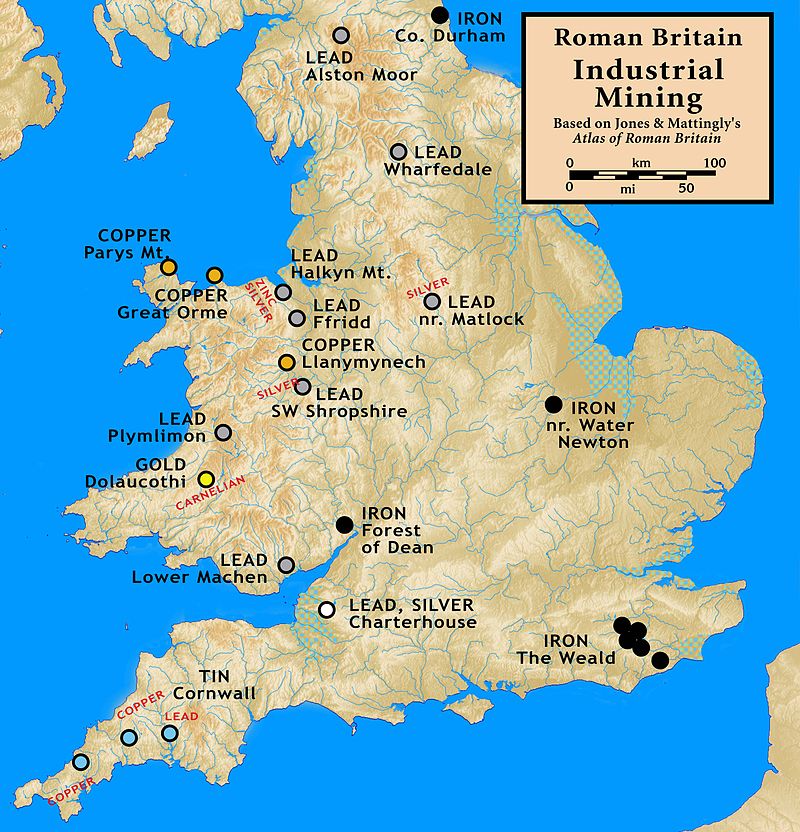
Roman Mines in Britain
Geology, Future Challenges and the Environment
How can geology tackle future challenges such as Climate Change, need for extra sources of energy, a changing economy, storage of nuclear waste material, the clash between resource extraction and communities, and how can geology contribute to the UN Sustainable Development Goals? This section looks at technologies aimed at changing the Earth’s climate, Geothermal Power Plants and Energy, Carbon Capture and Storage, nuclear waste storage, coal mining in Germany as a response to the phase out of nuclear power, the ideas etched on the Georgia Guidestones and political activism against Nuclear Power. The presentation also includes 2 slides on asteroid mining, discussing future, less realistic technologies.
Summary
Geology and civilization have deep connections. When James Hutton opened up the geological history of our planet, he opened up a political Pandora’s box. Before him the Earth was a simple, created entity with basic logic, a planet with a start, a middle and an end. For Hutton to declare that the planet is an endless cycle and it to run on basic laws, that, completely changed the perception of the planet by man.
“The result, therefore, of our present enquiry is, that we find no vestige of a beginning,–no prospect of an end.” – James Hutton
Poems
The Hugh Miller Writing Competition
From time to time I still scribble down poetry. In March I entered the Hugh Miller Writing Competition with Poems of my own. I entered 3 pieces, all 3 about special geological locations within Scotland. The first one focuses on Siccar Point and James Hutton, the second ones looks at the Devonian cliffs of Arbroath and the third one looks at the GeoPark in Assynt.
The Hugh Miller Writing Competition 2019-2020
I didn’t win the competition, however on the prompt of a journalist friend, I submitted the poem in the middle, to the Courier Newspaper for publishing.
The poems can be read bellow:
The Friendship of David Balfour and James Hutton
The reason for writing this poem
James Hutton’s understanding of Scotland’s geology couldn’t have happened without all his friends in Edinburgh and wider Britain. People like Joseph Black and James Watt introduced Hutton to basic concepts in the sciences of the 18th century from the laws of heat to a scientific understanding of energy. This poem is about a fictional friendship between the hero of Robert Louis Stevenson’s novel Kidnapped, David Balfour and James Hutton.
Poem on the fictional friendship
The Friendship of David Balfour and James Hutton
My name is David Balfour you see,
I am the laird of the House of Shaws,
Along with Alan Breck I ran the Highland Line,
As pursued by the red coats for the Appin murder,
I was kidnapped to sea,
By my wicked uncle and his fiendish friend, the Captain,
The ship crashed and I was wrecked off the coast of Iona,
Alan gave me a silver button, which was my passage through the Highlands,
Until I came upon great misfortune at Appin,
He saved my neck from the gallows, as we scrambled up into the heather at Kinlochleven,
I and Alan hid on the rocks of Glencoe and jumped the great waterfall,
As the King’s men pursued us like a red fox, the fowl,
We ran up Schiehallion to find the Clan Chief, Cluny Macpherson, in hiding,
We came down from the mountains at Callander,
Then we made the run for the auld Stirling Bridge,
Cross we could not, so a fair maiden sailed us across the waters of the Tay,
I managed to reclaim my fortunes in the burgh of Edinburgh,
But this story is neither here or there for the day!
With my fortunes reclaimed,
I married Catriona after a brief stint in France and the Netherlands,
Across the water,
I came to know many figures of the Enlightenment with the strangest of being,
James Hutton himself,
Hutton is a brilliant mind, a breaker of rocks,
Peering into the past,
Opened up an entire new science across the deep time of clocks!
But he is not exactly a fine gentleman…
He is known as an old riotous bastard across Edinburgh,
While his mind is fine,
Peering into the crystals of granite,
He knows his way around the ladies,
And with a drink, he is fast!
He was a while, exiled to the farms of Berwickshire,
For which you should not dare to ask!
While he is famous and infamous across the county,
My friendship with him is special indeed!
Out on a day, with a late boat ride, we managed to discover a now famous site,
A weird contortion of sandstone and sediment of the deep sea,
Siccar Point, lying across the bay of the blue creel!
A walk along the Seaton Cliffs
Explanation of the poem
I wrote the poem based around the idea of geological time and how long it is compared to human time and historical time. The geological history of Scotland stretches back to 3 billion years to the earliest rocks in the North-West Highlands, while the Arbroath Abbey was finished in 1197 AD. One man’s life time is just a few blinks to the other. I liked the idea of that contrast. I included it in the poem, it starts out talking about the geological age of the area (Ice age and the Devonian period), goes back in time billions of years, than suddenly it drifts onto the topic of human history from Agricola’s Caledonian campaign from 83 AD till the theft of the Stone of Scone in 1951 AD. I included the concept of the fleeting moment where the observer from the poem goes through the change of time as well, by starting out his walk at late afternoon and getting to Auchmithie at pitch black probably by 9-10 pm.
I seek to convey images, sounds and smells through the piece.
Inspiration for the poem
Three main things inspired me. The album Slipway: An Arbroath Song Book, the music album contains several songs about the coastal formations, pirates and the fishermen’s struggle against the sea. The geology of the landscape as it developed through Scotland’s journey on the shifting plates. Sir Walter Scot’s novel, The Antiquary where the story takes place around Angus in the 1790s. There is an extensive chapter on a cliff rescue in the middle of the novel. The perils of the sea are perfectly described in that novel.
The poem seeks to provide a nice overview of the history of the cliffs and the history of the area.
Launch of Slipway: An Arbroath Songbook
The poem is all about movement: the sun is travelling across the sky, the narrator of the poem is walking from Arbroath to Auchmithie, the narrator is time travelling as it goes through geological history than the history of Arbroath and Scotland, the rocks are on the move as the geology of Scotland comes to be, the poem has an assortment of historical characters who march in a line next to the character.
The Poem on the coast
A walk along the Seaton Cliffs
I walk across the cliffs of Angus from the smokie town o’ Arbroath,
Towards the fishing cottages of Auchmithie,
In-between lie mighty cliffs,
Of sandstone and conglomerate adrift.
Great features litter the coast: Needle E’e, Mermaid’s Kirk, Deil’s Heid and The Sphinx,
With the Masons’ Cave hiding many a secret!
The wind howls through the caves and stone arches like a ghostly piper,
Labyrinths running out to the open seas for 15,000 years.
The ocean like a great mason carved out the cliffs,
Before hand, the ice shaped the coast,
When its miles tall blanket covered Scotland…
The Sun is sinking, quick, bellow the horizon where the water and the land meet.
The rocks are divided into the two, like the mainland of Caledonia,
The Lower Devonian is blood red, cross bedded sandstone, 410 million years old!
With the middle missing, an Unconformity! Millions of years cast into the wind!
The Upper Devonian is all conglomerate,
370 million years old when Scotland was at the equator under the tropical sun!
The nation was part of an auld continent in the name of Laurentia,
While England was part of the continent Avalonia,
Both nations an ocean apart,
Until the seas of the Iapetus closed under miles of grinding rock,
Giving birth to volcanoes, mountain ranges,
Beaches upon which life first walked,
Tiny little lizards, tetrapods,
Now little fossils in the river beds, hidden in Romer’s gap.
Trapping many little worlds of stone,
The multi coloured little pebble clasts, in the conglomerate contain many a wonder,
From Granites to the odd Metamorphics, years in the billions,
All from mountains as tall as the Himalayas,
Now long gone, carried away by mighty rivers.
Dusk has came, as the Sun is gone, with seagulls settling back into their nests,
Salty air tingles the nostrils with a bit of seaweed mixed in,
The gentle sounds of the ocean splash away at the feet of the cliffs.
Like an orchestra playing a tune, it is the song of the sea.
The cliffs play a testimony to the history of Scotland,
My mind’s eye fill with the spirits of the past:
…
A Roman, in full armour just walked past, observing the fleet of Agricola as they sail up to Aberdeen.
…
A group of Picts are in a hurry to raise a tall standing stone with the Cross of St. Columba,
…
Viking armada, full of brave Danes, sails on the harbour, drums pounding, a guide through the cliffs.
…
Suddenly a monk shuffles past, rail lines run into the cliffs, as workmen cut stone for the new Abbey.
…
King Robert the Bruce, looks out onto the shores, as a boat, with a Declaration leaves for Avignon.
…
Ralph the Rover cuts down the Abbot’s warning bell over the Inchcape Rock, later, sealing his own doom!
…
A marry band of soldiers singing in Gaelic, clad in Tartan, march down the road for the rising of ’45,
…
Followed by Robert Burns as he profusely takes notes, grumbling about the weather in Scots.
…
Men with torches rush past me, as down below, screams, baskets lowered, to haul mariners to safety.
…
Sir Walter Scott rides past on horseback, as he is seeking the Inn Waverley, in Auchmithie.
…
Suddenly in the far distance, a blinking, pulsating light, the Bell Rock lighthouse rises out of the sea,
…
The Cutty Sark, the clipper ship, races across the waters, bringing tea from the Far East,
…
Sails give away to steam, as wood gives away to metal hull, a fishing fleet presses ahead,
…
The RNLI lifeboat speeds out onto open water, towards the souls, onboard the wrecked HMS Argyll,
…
In the sky, two Spitfires pursue a Messerschmitt, a kill shot, as the Iron Cross crashes into the fields.
…
As I walk ahead, a group of young lads carry the Stone of Destiny, as they disappear into the haar…
I am alone again on the wide-open coastal path.
The full Moon is up in the sky, reflecting on the tranquil ocean, as it lights my path.
As I head away into the night,
I hear the reverberation of a ghostly sound:
A native of Arbroath, the voice of Andy Stewart, echoing through the cliffs:
“But gin ye permit me, tae gang a wee bit-tie,
I’d show you the road, and the miles to Dundee…”
The Heavenly Twins, Assynt and Knockan Crag
The reason for writing this poem
This poem is related to my two week long field trip to the Assynt geopark in 2017. I found the sites and the sounds of the highlands very beautiful. Some parts of the trip were stressful. I was bitten by mosquitoes, doused with rain and even caught a hail storm. All this underlined the past struggles of geologists in the region. Like the geologists of today Peach and Horne traveled this landscape and slept in the hotel and lodgings geologists today use as shelter. The poem discusses the history of geological mapping in the region from the point of view of a European hiker.
Peach and Horne: the British Association excursion to Assynt September 1912
Reasons for writing the poem
What I find interesting is the stories of the people behind the geological discoveries. There is always an element of adventure, mystery or drama in the development of geology as a science in Scotland. The North-West Highlands are special as they play a role in the struggle of the little guy against the large establishment such as the BGS. Originally the idea of thrust faults didn’t exist in geology, therefore the geological structures of Assynt made no sense. Originally the BGS classified the metamorphic rocks as younger sedimentary rocks and got very annoyed when younger geologist disagreed with the status quo. Later on the idea of them being younger rocks was disproved but it took multiple teams and a lot of hard work to get the BGS to change its mind.
In the poem bellow I aim to capture that struggle.
The poem about the Highlands
The Heavenly Twins, Assynt and Knockan Crag
I wonder down from thee hills of the Highlands,
Lost up north in the wilderness,
My guide is only a great loch, stretched across the valley,
As I march down to the cottages at the centre,
Next to the ruins of an old Scots clan castle.
The valley, painted blood red orange as I reach the coast of the loch,
The town, no, village, no, a collection of cottages just to my left, the Hamlet of Inchnadamph,
Past the church, the old telephone box, the Commonwealth cemetery, an old hotel.
As I wonder onto the yard, I see a small obelisc on the hill, caught in the last rays of sunshine,
I give it no more thought, I stroll into the lobby: I slump into the sofa in a large reading room for all:
When I notice an old, slightly faded photograph, hanged upon the wall.
On it, sits two man of old, on the photograph from the last century,
For all to behold, their solemn expression tickles me with questions,
The two of them sit there, with their brave Mona Lisa smiles,
With their large overcoats, suits and ties,
Funny to think they might have roamed the mountains!
An old man sitting in the opposite chair,
His beard grey, with a full set of hair,
He is the man of the mountains,
With lots of experience.
He narrates the story as I prompt him with questions:
“These two gentle men, the heavenly twins, who sit upon the bench, with canes in both hands,
They are a man of great fame, of great fortune,
As they uncovered great treasure hidden beneath the lands of the Kelpie,
What they found must have shocked most and lead to a Highland conspiracy!
They were geologists, Peach and Horne,
Came here to answer questions bothering young and old: How was it, that old strata laid on the new?
As when we travel down the way, time should be turned back from young to the old grey rock,
Some have seen this in the Alps, so they were out for a shock!
The Moine Thrust cuts this land up towards the sky, as in the past, the rocks moved miles by,
The land through a fault moved a lot of stock,
Schists upon the limestones and the Sandstone of the Old Torridonian,
Even today you can pay a visit to that holy site, you might even find some Mylonite!
They mapped every corner and pasture, from the old folds to the Mull of Kintyre!
Even today the BGS raises their blessed names!
An obelisk like a trusty piper on top of a’mountain keeps their fame!
Just look around the old photograph, it covers all the walls, at the maps, aerial photos and charts!
These mountains tell a great tale, you just need to be more attentive than Murchison or Geikie of the past!
Now if you pour me another glass of whisky,
I tell the tale in greater detail…”
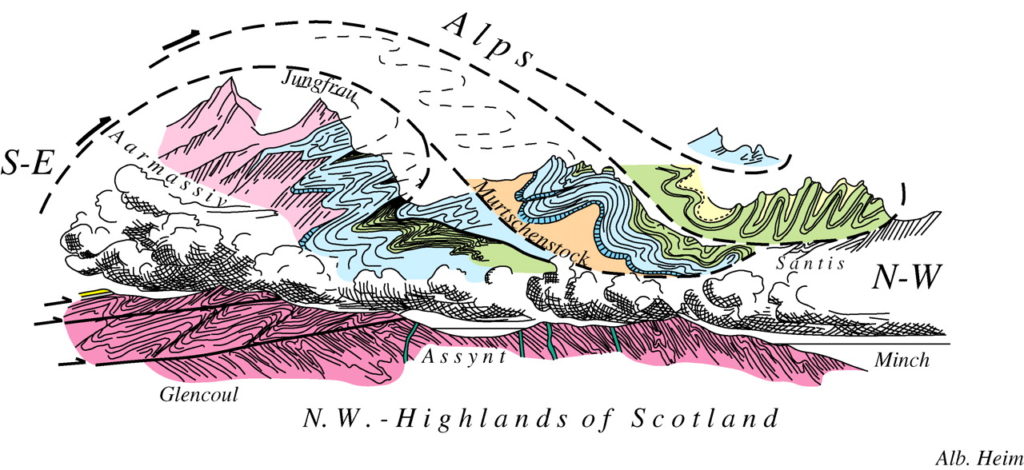
Heim’s concept of the relationships between a NW Highlands basement and an Alpine superstructure in a typical Mountain Chain (redrawn from Heim’s 1912 black and white sketch).
Song/Video
The History of Geology – Kate Tectonics
I decided that from now on, at the end of each blog I shall include a favourite song/video of something geology related that I liked.
This video goes through the history of geology from ancient Greece to Charles Lyell:
References
[1] Who needs science advice anyway? Governments, for one. (n.d.). Retrieved June 4, 2020, from https://theconversation.com/who-needs-science-advice-anyway-governments-for-one-99500
[2] The British and their exceptionalism | Centre for European Reform. (n.d.). Retrieved June 4, 2020, from https://www.cer.eu/insights/british-and-their-exceptionalism
[3] Hanson, J. (2014). German National Song in the Third Reich: A Tale of Two Anthems. Music and Politics, VII(1), 1–12. https://doi.org/10.3998/mp.9460447.0007.104
[4] Rourke, A. J. E. O., Isis, S., & Mar, N. (2020). Linked references are available on JSTOR for this article : All use subject to https://about.jstor.org/terms A Companson of James Hutton ’ s Principles of Knowledge and Theory of the Earth. 69(1), 4–20.
[5] Press, P. (2020). David Hume and America Author ( s ): John M . Werner Source : Journal of the History of Ideas , Vol . 33 , No . 3 , Festschrift for Philip P . Wiener Published by : University of Pennsylvania Press Stable URL : https://www.jstor.org/stable/2709045 REFEREN. 33(3), 439–456.
[6] NGU. (2012). Geology For Society. March, 43.


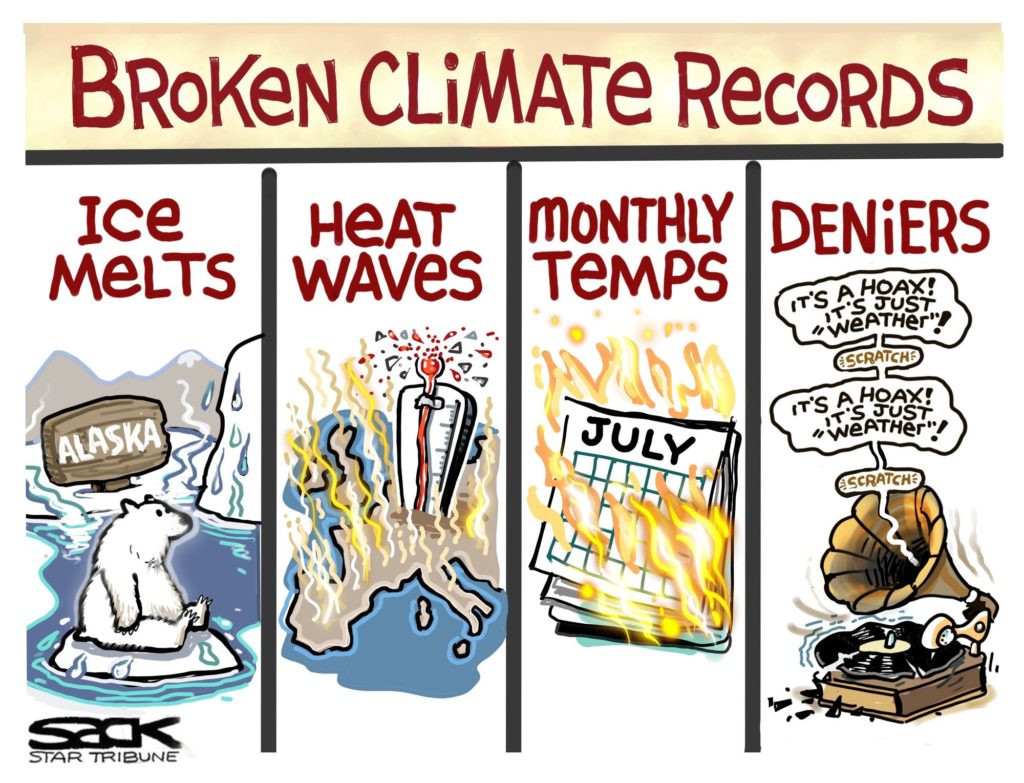
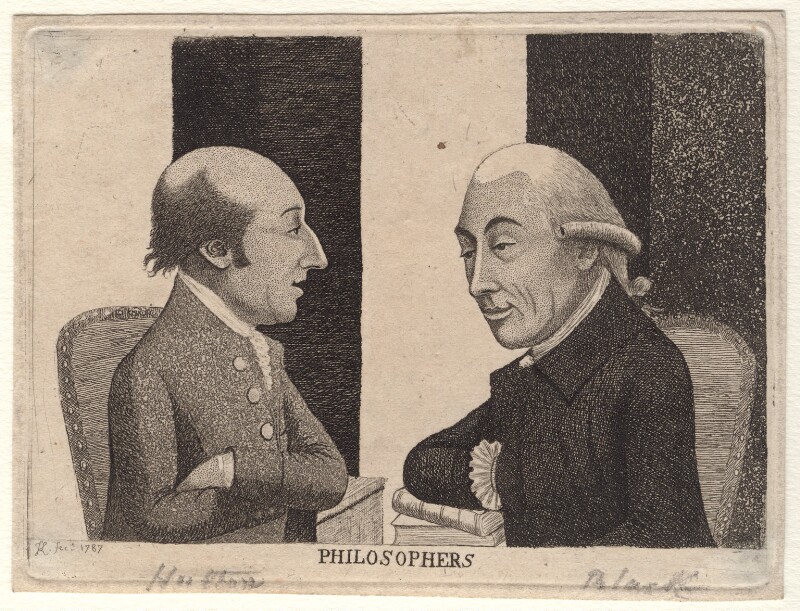
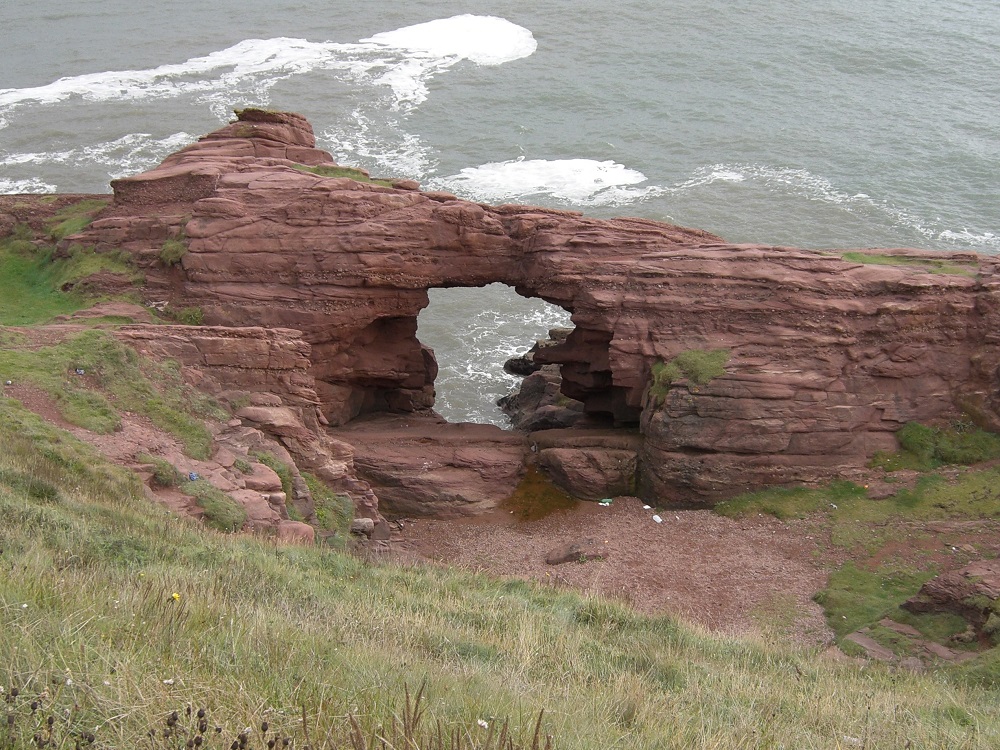



Recent comments